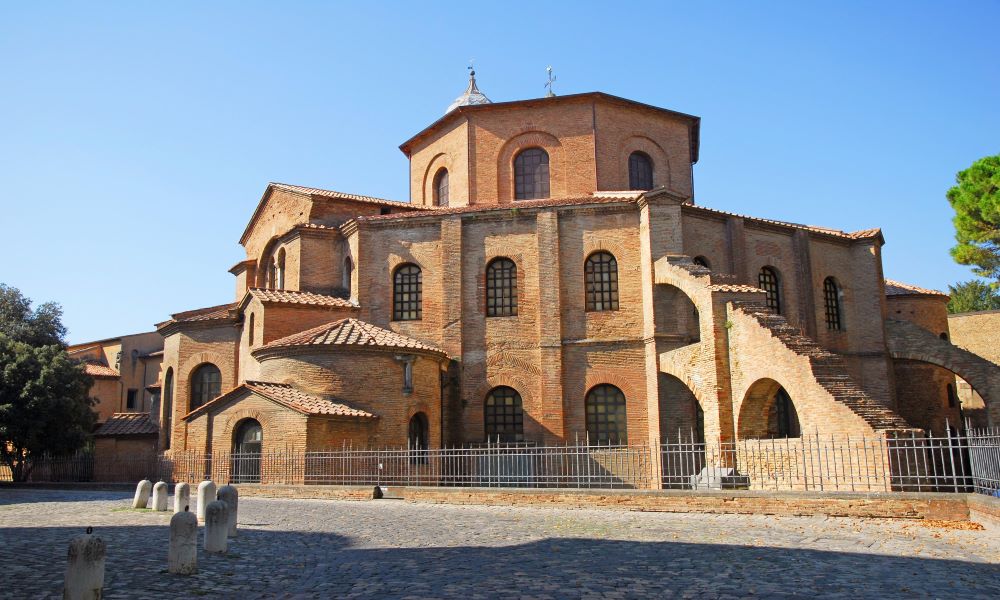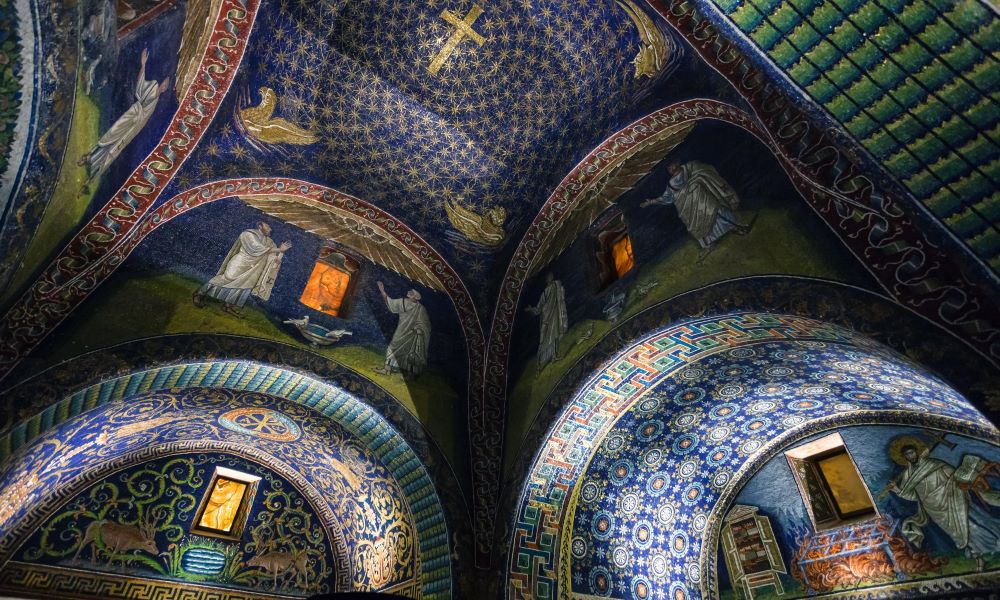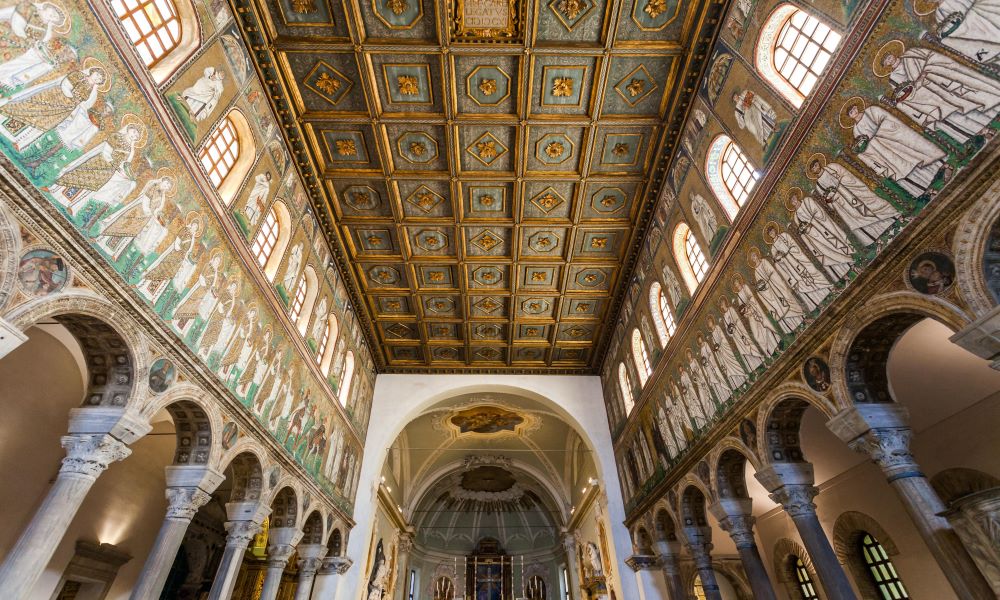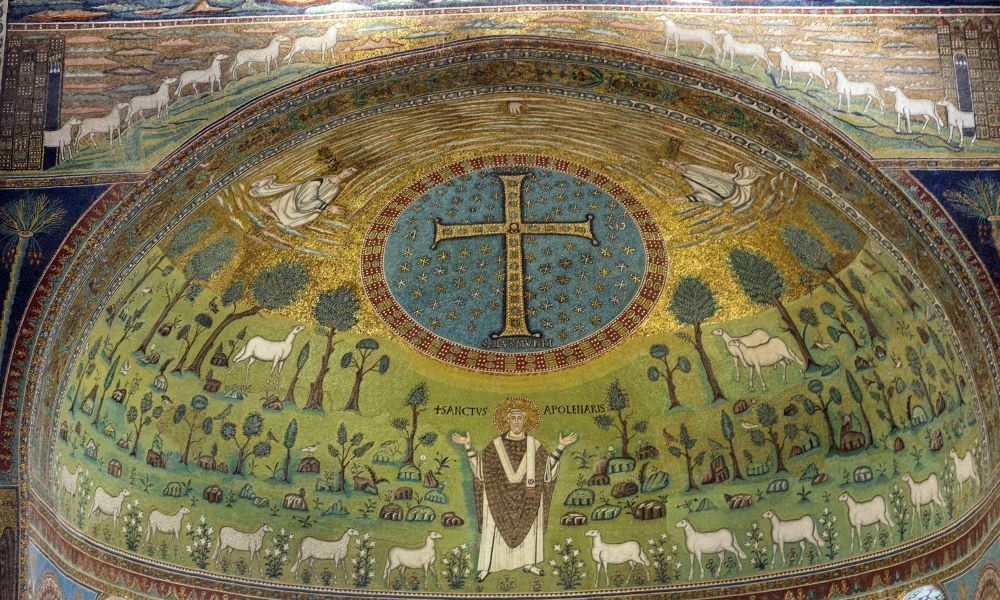It's a fact that the Byzantine mosaics of Ravenna are enchanting and that you need at least a couple of days to admire them all. But suppose you just have a day to visit the city. Which ones shall you see then? Choosing among the 8 UNESCO monuments and the numerous city museums hosting ancient and modern mosaics can be tough.
That’s why we provide you with a short but complete guide to Ravenna’s mosaics, hoping to help you decide which ones you can see in a day.
Let’s start from the basics. Learning about the history of mosaics at TAMO Museum
Before immersing yourself in the sea of coloured tiles of Ravenna’s churches, mausoleums and baptisteries, you could start your mosaic tour with an overview on the history of Ravenna’s mosaic art and its productions over time.
Housed inside the former and huge church of San Nicolò, TAMO Museum is a collection of mosaic pavements found in the Roman villas nearby Ravenna (you’ll find some others at the Domus dei Tappeti di Pietra), as well as medieval mosaics and works from the 1900s. This museum is a testimony of this lively art, which keeps on being handed down in the mosaic workshops of the city.
Risking a Stendhal syndrome at the Basilica San Vitale and Mausoleum of Galla Placidia
This can easily happen if it’s the first time you step into the Basilica di San Vitale. You’ll be gobsmacked! This architectural complex was declared a UNESCO heritage site in 1996 and it’s decorated with thousands of mosaic tiles which date back to the 6th century AD. Not a common church indeed!

It’s hard to explain what you feel when you enter this place. You’ll be first struck by the octagonal shape of the building, so different from the churches with 3 or 5 naves we’re used to see in Italy. Then, as soon as you turn to the altar you’ll be carried away by the eye-catching and bright lights and colours of the Byzantine mosaics, especially the ones showing the processions of Theodora and Justinian’s courts.
Going out of the Basilica San Vitale you can head to the nearby little Mausoleum of Galla Placidia which dates back to the first half of the 5th century. Its internal rooms are totally decorated with mosaics as well.
Inside, the light seeps in through the alabaster windows, creating a warm atmosphere, reflected in the blue sky sprinkled with stars above our heads. And suddenly we are thrown into another world...

Looking up inside the Neonian and Arian Baptisteries
The itinerary continues in the city centre with the visit of the Neonian and Arian Baptisteries. Their names bear witness to the two Christian worships that coexisted in Ravenna in the 5th century.
What these two little buildings have in common is the octagonal shape and the mosaic representation of the baptism of Christ in their domes. The two scene show some differences as far as colours and compositions are concerned: they need to be watched one after the other, in order to better appreciate their two different comments.

Walking down Via di Roma. The Basilica Sant’Apollinare Nuovo and the MAR museum
If you’ve followed our recommendations about which mosaics to see in a day in Ravenna, you won’t probably have much time left before going home. Yet, we can’t but end our guide talking about other two UNESCO buildings and one of the most important museums in the city.
Let’s now aim to Via di Roma then, where we can find the Basilica Sant’Apollinare Nuovo and the MAR, Ravenna Art Museum, set some steps away one from the other.
By watching the magnificent mosaic cycles decorating the central nave of Sant’Apollinare Nuovo, you’ll find out that at the time of their creation Ravenna’s layout was quite different from what it now is. In the VI century AD, the city overlooked the sea and its harbour was the current village of Classe, while in the city centre there was the Palace of Theodoric, which is now unfortunately lost.

Thanks to a visit of the MAR museum you’ll discover what is meant by contemporary mosaics. On the ground floor of its cloister you’ll find a series of mosaics based on sketches of famous 1900s painters, hanging side by side with particular mosaic sculptures. A funny one for example represents the iconic food of Romagna, a stuffed piadina!
Getting lost in the green meadows of Sant’Apollinare in Classe
The last UNESCO building we’ll be talking about is 8 km far from Ravenna, but it’s easily reachable by car or public transport.
The Basilica of Sant’Apollinare in Classe looks impressing right from the outside. Admiring the facade from the opposite lawn, with its herd of bronze buffalos on the grass, is like going back in time.
On entering the church, the eye is caught by the apse decorated with mosaics, where the patron saint of Ravenna, Apollinaris, stretches out his arms as to welcome us to his house. You can end the tour by admiring the mosaic garden depicted in the apse, animated by a splendid flora and fauna.

In case you don’t have enough time to organize the tour or you find it too stressful, you can take a look at the bike or walking tours of Ravenna proposed by Walk ‘n Ride. Beside showing you the most important mosaics, the guide will disclose the secrets of the historical buildings, the squares and the most significative buildings of the city, such as Piazza del Popolo, Palazzo Rasponi and the famous Dante Alighieri’s tomb.
Good to know: you can either join a public tour or create a customized tour that will suit your needs.

